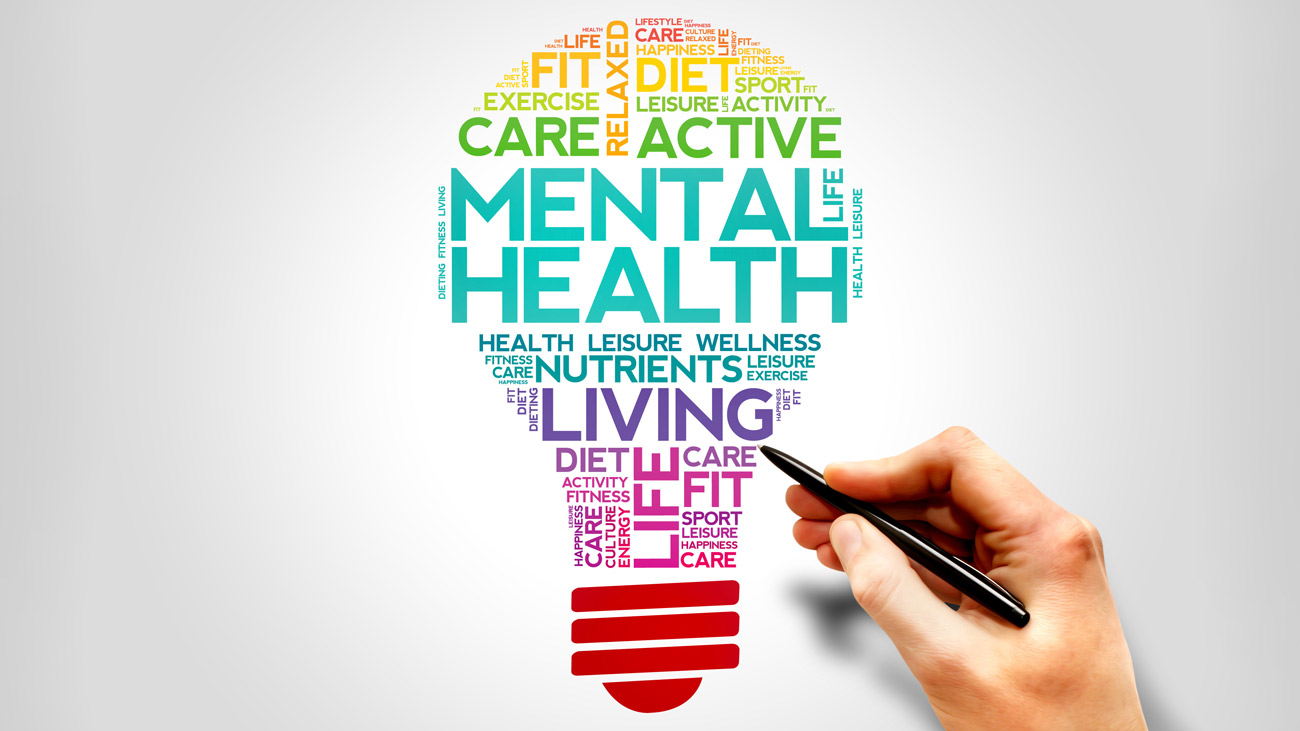
Mental health at work – where are we now?
Mental health appears in the news often, but it seems there has been little legal or strategic progression when it comes to mental health in the workplace. In this article, we review both positive and negative developments over the last six months and consider, where are we now?
The first King’s Speech in 70 years was delivered on 7 November 2023 in Parliament. Those hoping to hear a planned legislative agenda that would deliver decent living and working conditions, while creating work that’s good for societal wellbeing, were disappointed.
With the ONS reporting low levels of personal wellbeing (life satisfaction and happiness) and high levels of anxiety in the UK, Labour Market data shows that, while just 4.2% of those aged 16-64 are unemployed, a concerning 20.9% are economically inactive (those not seeking work and/or unable to start work). IOSH has made public its regret at seeing a lack of appetite for conducting a necessary reform of the Mental Health Act.
Mental health inequalities and mental ill health have a strong work-related component, but the government has opted to freeze the agenda on their commitments to reform the mental health system, as well as the agenda for promoting positive mental health in the workplace, citing it as a driver in achieving a healthy and productive workforce.
In September 2023, the Department for Work and Pensions (DWP) launched a consultation on changes to the Work Capability Assessment, which looked at updating its categories so they “better reflect the modern world of work and the opportunities more readily available to disabled people”, ideally getting more people into work.
The assessment categories were designed to determine what activity people can do and how that affects their ability to work. This then informs assessors’ decisions on what additional financial support people can receive through their benefits, and if claimants need to do anything to prepare themselves for work.
These proposed changes are due to come into force in 2025 but were also met with criticism. Vicki Nash, Associate Director of External Relations at mental health charity Mind said:
“While the rising number of people with mental health problems unable to work is extremely concerning, reducing the number of people able to claim sickness benefits is not a magical solution that will make people well enough for work. With these reforms, the UK government will be taking away much-needed financial support and the breathing space provided by the benefits system when people need it most. We know the best way to get people with mental health problems back into work is to offer effective support in the workplace and through well-resourced mental health services, but this is not the approach being taken. A focus on returning to work will mean work coaches being pressured to deliver mental health support, without the proper training, instead of the government delivering an investment in mental health care.
“It is also untrue to say that people experiencing mental health problems that would mean they shouldn’t be working can simply work from home instead. This is presenteeism, and it stops people working at their best and can delay our recovery. People must take time off if they are unwell, regardless of where they work. Mental health needs to be treated with the same respect as physical health.”
Mark Barrett, Health and Safety Trainer with International Workplace, had advice for employers faced with mental health sufferers potentially returning to work too soon. He said:
“For mental health issues such as work-related stress, the employer must satisfy themselves that workers are fit to attend work prior to coming back into the workplace. This can be achieved by initially maintaining regular communication with the worker during the absence as well as looking into the causes of the work-related stress. Employers will need some confirmation from the worker’s GP/mental health professional that they are fit to return to work either at full capacity or by a phased return. Once assessed, the employer can look into putting a plan in place for the return to work. The employer should already have a stress risk assessment in which they look at the main causes of work-related stress.”
Work-related stress was also a key component in research into the effects of pandemic-enforced homeworking and the potential for employee-brought legal cases in the not-too-distant future.
One of the major drawbacks of working from home is a sense of isolation, and with around one in four people in the UK experiencing a mental health problem each year, line managers should have been and continue to be active in exercising their duty of care by regularly checking in with their team and revisiting their mental health risk assessments for homeworkers.
During the pandemic, enforced homeworking was among the most common causes of workplace stress. Remote and hybrid working can lead to blurring of work-life boundaries and a feeling of pressure to always be available online, as well as an increase in unpaid overtime work hours. Use of information and communication technologies to engage in work-related tasks outside of work time can make it difficult for workers to ‘switch off’.
It's been a tough time for many businesses. However, the employer still has a duty not to put employees under too much pressure mentally, and to ensure that workload levels remain achievable. The courts recognise mental duress in the same way they recognise physical injuries, allowing claims to be made for stress and other psychological injuries suffered at work. This could apply to a homeworking set-up just as feasibly as it could anywhere else.
Work related stress, depression or anxiety represented the highest proportion of work-related ill health (51%, or 914,000 cases) in last year’s figures, which was close to double the number of work-related musculoskeletal disorders (27%, or 477,000 cases) reported during the same period.
The HSE strategy for 2022 to 2032 sets out its priorities and objectives for the next decade. The first objective is to undertake work to reduce the trend of increasing work-related ill health, with a specific focus on mental health. In support of this objective, the HSE is currently running a number of different campaigns with the aim of raising awareness of the importance of protecting workers’ health.
One of the leading initiatives is the ‘Working Minds’ campaign. The campaign focuses on reminding employers that they have an obligation to consider work-related stress as a risk to employees and, as such, must have in place appropriate control measures. This includes having a workplace mental health risk assessment to ensure adequate control measures are in place, such as working mind champions, mental health first aiders and stress talking tool kits.
Olivia Tusler, Senior Associate, and Janine Holbrook, Senior Associate at law firm Kennedys said:
“We are unaware of criminal proceedings having been brought in relation to work-related stress, depression or anxiety, unlike other cases of occupational ill health, such as vibration-related conditions and respiratory problems. However, the HSE has indicated that it would consider prosecuting businesses if there is evidence of a number of staff suffering with poor work-related mental health and organisational failings to protect employees.
“Further, the HSE cannot, at present, investigate any work-related suicide unless a referral from a coroner is received, but this could change. Very recently there have been calls for the HSE’s remit to expand following the tragic death of primary school teacher Ruth Perry, who took her own life whilst awaiting the outcome of an Ofsted report.”
Writing in the British Medical Journal about this case, the authors said that, whenever events at someone’s work seem to be linked to their suicide, it is reasonable to expect that everyone involved will want to find out what happened and how a similar event can be prevented from happening again. Yet, even though the link between adverse working conditions and suicide is well established, regulations requiring reporting of work-related deaths to the HSE in Great Britain specifically exclude suicides. This is different from many other countries. In France, for example, if there is even a suggestion of a link between suicide and working conditions, the burden of proof falls on the employer to show otherwise.
The BMJ argues the HSE should investigate every work-related suicide, in whichever sector they occur, and ensure that work-related suicides are subject to the same requirements for reporting and prevention as other occupational deaths.
Other legal developments
Last year, a Bill was presented to parliament putting forward a proposal for mental health first aiders to be appointed in workplaces.
The Bill was designed to make mental health first aid part of first aid training requirements in workplaces as well as in wider society. Mental health first aid teaches how to help a person developing a mental health problem, becoming more unwell, or in a mental health crisis.
The mental health first aider role involves:
- Recognising the early signs and symptoms of common workplace mental health illnesses.
- Developing the essential skills for supportive, non-judgemental conversation with those employees that need it.
- Acquiring the expertise and confidence to guide employees to appropriate professional support.
- Reducing the stigma of mental health by promoting awareness of the issue.
The Bill only got as far as its first reading in the Commons; Ten Minute Rule Bills rarely become law - but they represent an avenue for MPs to raise awareness of issues.
Without legislation, the decision as to what mental health first aid provision you need should be based on your individual business needs. The HSE says:
“You should consider ways to manage mental ill health in your workplace which are appropriate for your business, such as providing information or training for managers and employees, employing occupational health professionals, appointing mental health trained first aiders and implementing employee support programmes.”
Looking forward
On 1 February 2024, the UK held the nation’s biggest annual mental health conversation, Time to Talk Day. Run by the UK charities Mind and Rethink Mental Illness, the day raises awareness of the importance of open conversations around mental health.
The course recommends that one way of improving mental ill health in the workplace can be an open, one-to-one discussion, as advocated by Time to Talk Day. Here are some tips around the best approach that you can use and share:
- Offer reassurance. Be mindful that not everyone will want to talk straight away. Let them know what support is available and that when they feel able to talk, support will be there.
- When someone is ready to talk, choose an appropriate place, somewhere private and quiet. Find an environment that will put the person at ease, either at work or outside of work.
- Encourage people to talk – ask simple, open questions and let them speak in their own words.
- Ask what they think may be the cause of their feelings, how it affects their life and work, and what support they are getting or need.
- Don’t make assumptions. They may not need help or may feel they are able to manage. Support might only be needed every now and again, during difficult periods.
- Listen carefully. Make sure that the person, and not their problem, is the focus. Adapt the support to suit them, involve them in finding solutions and check what workplace adjustments you can offer before you have the conversation.
- Ensure confidentiality so that they know what is said will be kept as confidential as possible. If you feel you need to share the information with specific people, such as HR, make sure you get the person’s agreement first.
- Develop an individual action plan that suits the person and their needs. It can help to identify triggers, impacts on work, who to contact in a crisis, what support they need and also ways to monitor things.
- Encourage the person to seek help themselves – many organisations have employee assistance programmes that can offer counselling or access to helplines.
- Seek advice and support from HR or occupational health if you feel unable to offer the support and advice needed.
- Be honest and clear. If there are concerns about high absence levels or low performance, these need to be addressed at an early stage.
Further reading
IOSH sees ‘Secret Seven Go Missing’ from King’s Speech
Will capability assessment changes force sick employees into work?
Homeworking: are there prosecutions to come?
HSE: a shift from safety to work-related mental health?
All work-related suicide should be HSE investigated
Talking to staff about mental health: top tips
Further guidance
IOSH Managing Occupational Health and Wellbeing, brought to you by International Workplace, is suitable for managers and supervisors working in any sector and for any organisation. It's designed to provide them with the tools and techniques to improve health and wellbeing in the organisation.
It's accredited by the Institution of Occupational Safety and Health (IOSH), the market-leading designer of manager courses for safety, health and wellbeing. So once your learners successfully complete the course, they will be issued with an official IOSH certification. Find out more here.
International Workplace has also produced a series of downloadable guides around occupational health and wellbeing:
Mental Health in the Workplace: A Line Manager’s Guide
Wellbeing in the Workplace: A Line Manager’s Guide
Mitigating the Risks of MSDs in Hybrid Working: A Manager’s Guide
Stress in the Workplace: A Line Manager’s Guide







